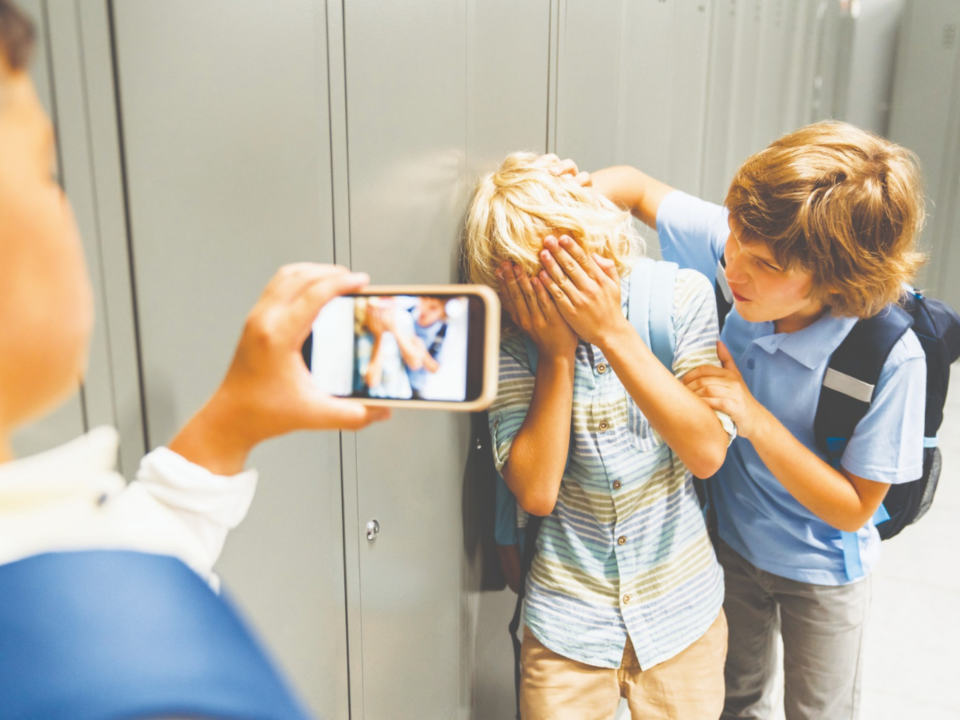When he was 13 years old, Traeh Thyssen was an eighth-grade student in the talented arts and gifted program. He played the violin and cello, and he had long, curly hair that he was growing out to donate when he turned 18. Despite his philanthropic heart, his hair was one of many things he experienced bullying over.
Dr. Rosalynn Thyssen, his mother and founder of the Have a Heart Foundation, shares, “[Traeh] did experience all forms of bullying, from verbal to physical to purposeful exclusion, where he was purposely excluded from activities, and cyberbullying as well.”
Hoping to put a stop to the bullying, Traeh reported the bullying to a teacher. Dr. Rosalynn also met with school administrators, where she was told that, “they will take care of it, they will look into it, and that he seemed ‘okay.’” Traeh committed suicide in October of 2019 due to the unresolved bullying.
Crimestoppers Safe Schools Louisiana–an app that allows students to anonymously submit tips in order to help keep themselves or others safe from threats, harmful behaviors, or dangerous situations–reports that bullying is the most submitted tip on the app.
Darlene Cusanza, President & CEO of Safe Schools Louisiana, explains, “Our number one tip has to do with bullying, whether it’s cyberbullying or bullying in person, and we’ve seen that continue, pretty much for several years, where that has been the highest level of reports. We’ve also seen an increase in reports about self-harm. So of the two, that’s the majority of the tips that have come through.”
With the number of bullying reports reaching such high levels, what are our schools doing to help stop this from happening? How much can they intervene?
Culture in the Classroom
At the root of it all, the culture of the school and in the classroom plays a huge role in protecting students and preventing bullying. Establishing respect for fellow students and looking out for one another is especially helpful.
Cusanza shares, “We talk quite a bit about students being upstanders, not just bystanders. When you see this happen to your friends or whoever it is around you, don’t just not speak up. It’s important that they show that this is not acceptable behavior. They would not want to have that behavior being done to them. [Also,] we want to make sure that whoever is the victim of bullying is supported, and there’s a lot of conversations that can be had through the parents about that to help in the classrooms.”
For National Bullying Prevention Month, according to the website, Jefferson Parish School Board requires students in grades 3-12 to receive and acknowledge receipt of one hour of age-appropriate Anti-Bullying Training. The schools must also provide a designated area where students can anonymously make reports of bullying.
By providing students with these tools and preparing them for what to expect, they are more equipped to navigate through bullying situations, whether they are experiencing the bullying themselves or one of their friends.
Training for Teachers
Teachers are sometimes the first line of defense in helping create a safe environment for their students. With the culture in the classroom being so important, teachers must know how to navigate through the obstacles as well.
Sharon Blackmon, Director of Training at Families Helping Families of Greater New Orleans, shares, “Each school district must provide training to all employees on bullying–how to identify it, how to report it, who the most likely victims will be, and how to appropriately intervene.”
According to Jefferson Parish Schools’ website, school district employees who work with students must complete two hours of Bullying Prevention training, with new employees being required to complete four hours of training.
The Vector Solutions training includes topics such as bullying basics, identifying bullying behavior, how bullying works, and effective ways to address the problem.
Reports of Bullying
Despite the training for administrators and students, bullying reports remain high, and many parents feel that there isn’t enough being done once the bullying has been reported. Oftentimes, the reporting process can vary by school or parish.
Blackmon shares, “Louisiana’s Bullying Prevention Law authorized the State Board of Elementary and Secondary Education (BESE) to collaborate with the Louisiana Department of Education (LDOE) to develop rules and regulations on bullying prevention. Reported acts of bullying MUST be investigated immediately. If parents are unsatisfied with the result of the investigation, they can appeal to the district or the LDOE.”
Work to be Done
There is still work to be done in our schools to help prevent bullying. In order to better help protect our students and create safer environments, Dr. Rosalynn suggests that the training needs to be better, not just for building awareness but for how to handle bullying when it occurs.
She says, “It has to be handled very delicately because when it’s not, unfortunately, it gets worse. And when it gets worse, the kids who are being bullied, they feel worse. And then sometimes, we end up with situations like Traeh’s, where they’re no longer here.”
Being more aware and taking the initiative to take things a step further is work that has to be done because we can’t lose any more lives, Dr. Rosalynn adds.
Cusanza agrees and shares that having an open conversation and discussing what bullying is and how you should respond if you’re the victim is important. She also notes that educating parents on the proper way to respond and the proper way to share information in a constructive way is especially crucial. “This happens a lot, so sharing what you’re seeing with the proper adults in authority is very important because then they have a trail to see the behavior that’s being demonstrated,” she says.
Unfortunately, bullying is happening everywhere, and a lot of the time, we aren’t even aware of it. Holding each other accountable, reporting what we see, extensive training, enforcing positive behavior among students, and practicing empathy can move us one step closer to preventing bullying in our schools.

